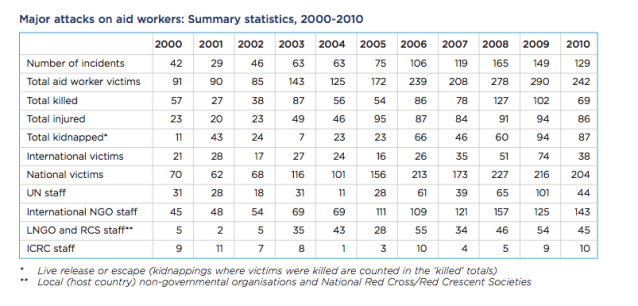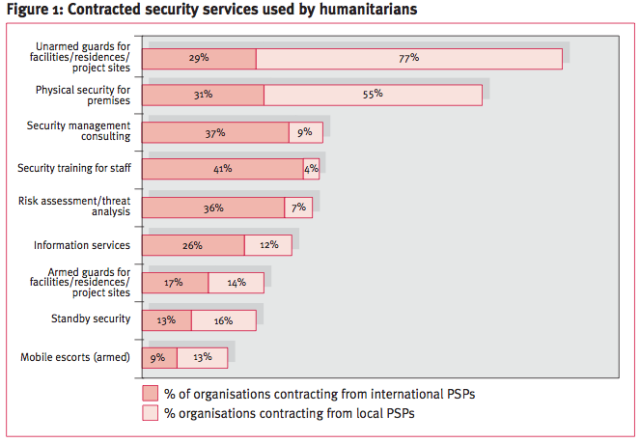This is a great little document, just because Moshe Schwartz has been in the middle of this contracting reporting game for a long time, and has come up with some great lessons learned. He also works for the congressional research service and has authored several reports on the war that I have commented on in the past.
Some stuff that jumped out at me was the idea of teaching ‘how to manage contractors’ in the military academies and schools. To actually have mock contractors on exercises with the military, so officers and NCO’s have some experience working with this group. Especially since we make up over ‘half’ of the forces in the war–it kind of makes sense that the military should learn to how to work with and manage this force. So bravo to Moshe for pointing this out and I hope the military continues to pursue this and professionalize contractor management.
This leads me to another thought. I think the best group to set up mock contracting scenarios during exercises, would be contractors themselves. So perhaps this would be a niche that a company can provide to the military? There are numerous companies that provide mock villages and cultural training to the military to better prepare the troops before they deploy. The same concept could be applied to training the military on how best to work with and manage contractors.
One of the mantras of the military is to train as you fight and fight as you train. Given the extent to which contractors may be relied upon in future operations, conducting exercises without contractors could be akin to training without half of the force present. A number of analysts have called for incorporating contractors and contractor scenarios into appropriate military exercises to better prepare military planners and operational commanders for future operations. -pg. 7-8
Another way to look at this is that contractors, much like Iraqis or Afghans, are a group that you must understand ‘culturally’ in order to best work with them. I say culturally, because strangely enough, not all contractors are prior service. And not all contractors come from the US. So you have a lot of factors that the military command has to deal with, if they want those contractors to be assets to the mission and not liabilities.
Which brings me to the next point of interest. Moshe mentioned that as the wars wind down, and troops and budgets get cut, the military will be looking for ways of saving money and expanding the usefulness of the manpower they have. So to do that would require a smarter use of contractors to support the programs they have. The British mentioned this as well in their drive to save money and stay operational.
To what extent will potential budget cuts or force structure changes impact DoD reliance on contractors?
As discussed in this report, post-Cold War budget cuts resulted in an increased reliance on contractors. According to reports, budget cuts and plans to restructure the military in Britain will result in an increased reliance on contractors to provide operational contract support. Further budget cuts to the US military could have similar result. One question for Congress is to what extent budget cuts, the imposition of personnel caps, or a restructuring of the force will lead to an increased reliance on contractors? -pg. 12
Not only that, but if you remember the paper written by Bruce Stanley as to the relationship between the cycles of war and contractor use, it makes even more sense why we should remember these lessons so we can be prepared for future conflict.
This study argues that when political leaders choose to reduce their nation’s military force structure, they may face conflicts beyond their anticipated scope and duration. Such decision-makers are left with no choice but to legalize and legitimize the use of PMCs resulting in the increased use of PMCs as a deliberate tool of foreign policy.
Or how I interpret this is that a nation wants to enjoy the peace dividend when the war ends, so they cut budgets and reduce the force to make everyone happy and recover economically. But then another war happens several years down the road, and you go to war with army you have and not the one you wish you had. So we play catch up and we use contractors to fill the gaps or assist in support–which is what happened in Iraq and Afghanistan post Cold War.
Contractors are pretty vital to that game of catch up, which is of strategic importance to this nation. So yeah, learning from past mistakes and preparing for the future is something we need to do here, and bravo to Moshe and others for making that point. –Matt
Operational Contract Support: Learning From The Past And Preparing For The Future, By Moshe Schwartz

